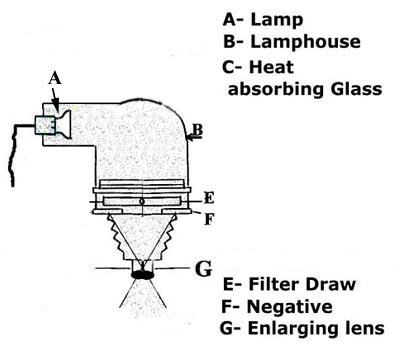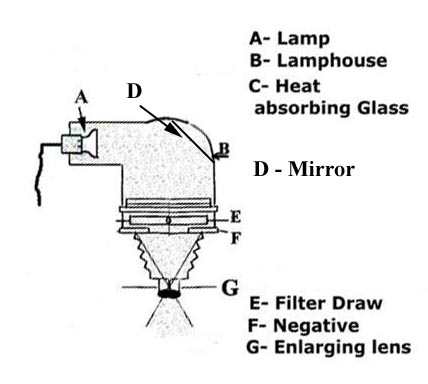Enlarger Illumination - Diffusion Enlargers
Diffusion enlargers can be made with a much simpler construction: A lamp that bounces the light rays around inside the housing and are finally directed through a piece of frosted glass or plastic inserted in the light path between the light source and the negative. The frosted glass might be frosted in such a way that it has a greater density in the centre than around the edges so that it compensates for the brightness of light in the centre. The light rays being reflected by the curved surfaces of the reflector of the lamp housing and strike the frosted glass from a wide variety of oblique angles.
This
means that as the light passes through the negative it does
so at many different angles which has the effect scattering
the light and softening the image. So ultimately, the image,
though correctly focused lack crispness and contrast that a
condenser enlarger might. Because of this scattering of the
light, making a print with a diffusion enlarger require a longer
exposure to produce the same density as a condenser enlarger.
|
Mouse over to view roll over image However they tend to diminish any negative flaws like scratches and dust in the final print. |
With diffusion enlargers that have a fluorescent or cold source of illumination exposures are shorter than with tungsten lamps because these lamps are very rich in blue light which the blue sensitive emulsion reacts to. Remember that we use a yellow or red safe light which emits no blue light and would fog the paper. This light source however can not be used for colour work because it is devoid of the other colours in the light source.
Variation of the diffusion enlarger might include:
| *enlargers which have the light source at right angles to the enlarging lens axis and use a mirror to reflect the light downwards.
*enlargers which also combine condenser lenses. |
Mouse over to view roll over image |

